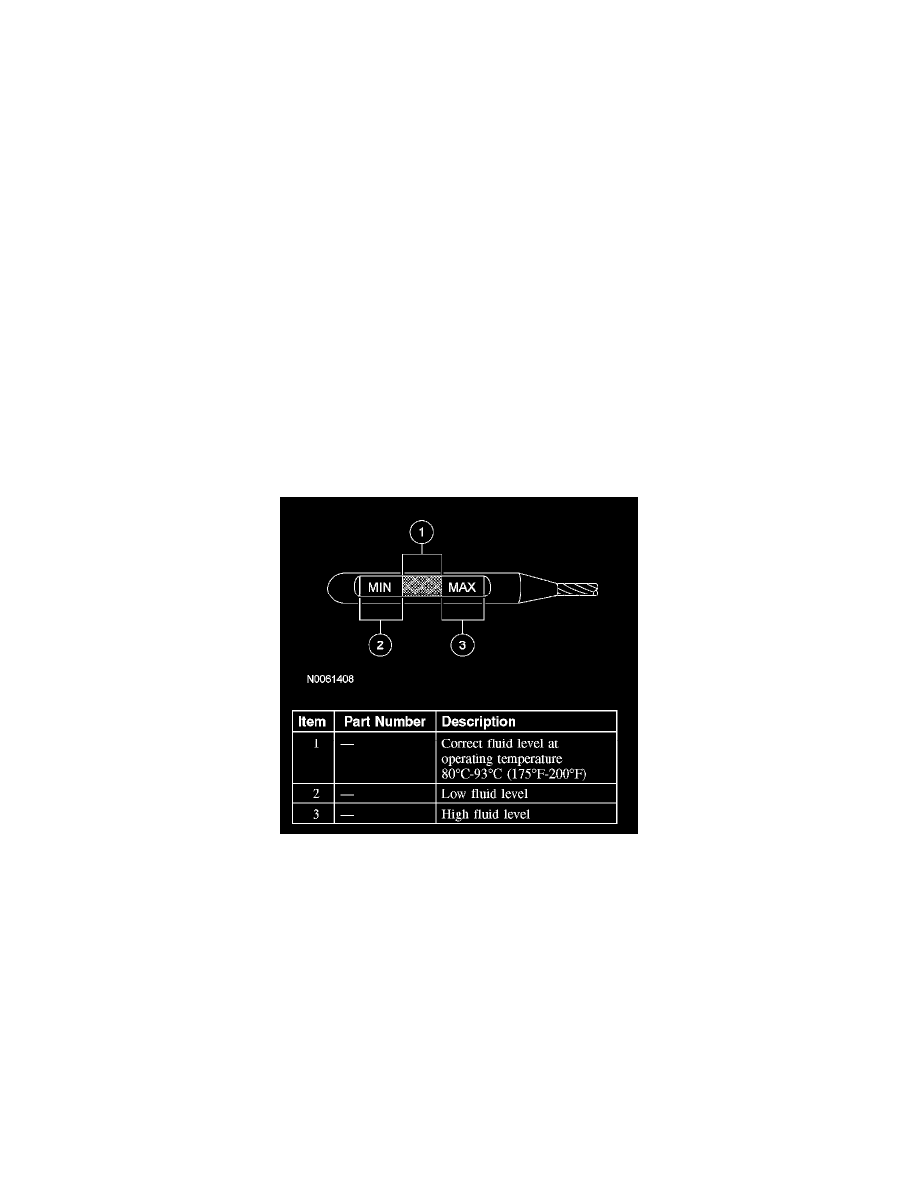Edge FWD V6-3.5L (2007)

Fluid - A/T: Testing and Inspection
Check Fluid Level and Condition (All vehicles)
CAUTION: The vehicle should not be driven if the fluid level indicator shows the fluid below the minimum fluid level mark or internal failure
could result.
If the vehicle has been operated for an extended period of time, at highway speeds, in city traffic, in hot weather or while pulling a trailer, the fluid needs
to cool down to obtain an accurate reading.
The fluid level reading on the fluid level indicator will differ depending on operating and ambient temperatures. The correct reading should be within the
normal operating temperature range.
Fluid Level Check
NOTE: The transmission fluid should be checked at normal operating temperature 80°C-93°C (175°F-200°F) on a level surface. Normal operating
temperature can be reached after approximately 32 km (20 miles) of driving and can be checked using the scan tool.
Under normal circumstances the fluid level should be checked during normal maintenance. If the transaxle starts to slip, shifts slowly or shows signs of
fluid leaking, the fluid level should be checked.
1. With the transaxle in PARK, the engine at idle, foot pressed on the brake, move the selector lever through each gear and allow engagement of each
gear. Place the selector lever in the PARK position.
2. Wipe the fluid level indicator cap and remove the fluid level indicator.
3. Wipe the fluid level indicator with a clean cloth.
4. Install the fluid level indicator back in the fluid indicator tube until it is fully seated, then remove the indicator. The fluid level should be within the
normal operating range.
High Fluid Level
A fluid level that is too high may cause the fluid to become aerated due to the churning action of the rotating internal parts. This will cause erratic control
pressure, foaming, loss of fluid from the vent tube and possible transaxle malfunction and/or damage.
Low Fluid Level
A low fluid level could result in poor transaxle engagement, slipping, malfunction and/or damage. This could also indicate a leak in one of the transaxle
seals or gaskets.
Adding Fluid
CAUTION: MERCON(R) V, MERCON(R) SP, Motorcraft Premium Automatic Transmission Fluid, Motorcraft Continuously Variable Chain
Type Transmission Fluid and FNR5 automatic transmission fluid are not interchangeable transmission fluids. The use of any fluid other than
what is recommended for this transmission will cause transmission damage.
If fluid needs to be added, add fluid in 0.25L (1/2 pt) increments through the indicator tube. Do not overfill the fluid.
Fluid Condition Check
